Microwave Pyrolysis and Extraction processing line
Microwave Pyrolysis and Extraction processing line Microwave heating for wastewater treatment has the characteristics of heat loss without heat transfer, internal and external heat, and no heat transfer process. With these heating characteristics, microwave technology can be effectively used for sludge and organic pollutants. Processing. The current methods of microwave technology for wastewater treatment are:
(1) Microwave Pyrolysis and Extraction processing line induces oxidation. The microwave-induced oxidation reaction is a catalytic reaction induced by a microwave sensitizer that transmits microwave energy to an organic compound that does not directly absorb microwaves. The key to the technology is the microwave induced oxidation process (MIOP). The catalyst was prepared.
G-LEADER uses the MIOP process conditions to treat simulated and actual wastewater with Fe2O3 as a catalyst, which removes 50% of COD and 80% of chroma water. G-LEADER uses self-made Fe-Zr as catalyst, H2O2 as oxidant, n-butyric acid as simulated pollutant, and TOC removal rate as indicator. Microwave/Fe-Zr combined technology is used to treat n-butyric acid by orthogonal test. The optimized conditions for simulated wastewater, namely 150 mL of n-butyric acid simulated wastewater with a TOC of about 490 mg/L, the amount of Fe-Zr is 4 g, the amount of H2O2 is 7 mL, the power of the microwave oven is 640 W, and the effect of microwave The time is 10 min, and the removal rate of TOC is as high as 95%.
(2) Microwave Pyrolysis and Extraction processing line Activates ultraviolet light to treat waste water. G-LEADER uses NaClO as an oxidant to treat reactive red 195 dye simulated wastewater by iron-carbon microelectrolysis-microwave excitation ultraviolet light. When the amount of NaC1O added was 9 mol/L, the decolorization rate of wastewater was 97%, and the COD removal was achieved by using iron-carbon microelectrolysis-microwave excitation ultraviolet light to treat the reactive red 195 dye wastewater with a concentration of 400 mg/L for 50 min. The rate is 82%.
(3) Microwave Pyrolysis and Extraction processing line. That is, the pollutants are first adsorbed by activated carbon or other adsorbent, and then the saturated adsorbent is placed in a microwave field for radiation to degrade the adsorbed pollutants. The microwave radiation regeneration method has low cost for treating wastewater, and the adsorbent can be recycled.
(4) Microwave Pyrolysis and Extraction processing line Direct radiation method. That is to directly irradiate the contaminated wastewater with or without the adsorbent by microwave to achieve the purpose of enhancing the removal of pollutants in the water. The method is sometimes combined with auxiliary methods such as chemical oxidation and photocatalysis to further improve the removal of pollutants. effect.
G-LEADER compares the removal efficiency and efficacy of phenol by two methods. The results show that under the two microwave radiation modes, activated carbon can effectively remove phenol from water. The regeneration rate of activated carbon by microwave radiation regeneration method can reach 96%, and the multiple regeneration rate is 50%-70%. The removal rate of phenol by radiation method is 7%-20% higher than that of activated carbon alone, and the removal rate is up to 93% when the concentration of phenol is low (462 mg/L). The test results also show that the decontamination efficiency index (P) value of the microwave regeneration method is generally higher than the direct microwave method, and the activated carbon can be reused, which is a more economical and effective microwave method.
2 Problems and Outlook In summary, Microwave Pyrolysis and Extraction processing line features fast heating, high efficiency, low cost and good environmental performance. It is used in navigation, communication, defense and military, in addition to the above fields. We have achieved good results in areas such as weapons. Nevertheless, microwave technology is still a new stage in the development of science and technology. The author believes that the development of microwave technology should be strengthened from the following aspects.
(1) Strengthen the basic theoretical research of Microwave Pyrolysis and Extraction processing line technology;
(2) Strengthen the development of microwave equipment and the investment of funds;
(3) Strengthen publicity and publicize the superiority of the new technology of Microwave Pyrolysis and Extraction processing line to make people realize the advantages of microwave technology and use microwave technology.
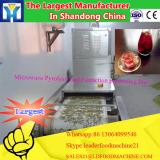
- Microwave Active ingredient Pyrolysis and Extraction processing line
- 1 pcs
- Negotiable
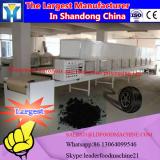
- Microwave sludge Pyrolysis and Extraction processing line
- 1 pcs
- Negotiable
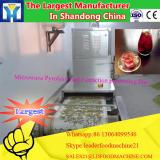
- Microwave medicinal powder Pyrolysis and Extraction processing line
- 1 pcs
- Negotiable
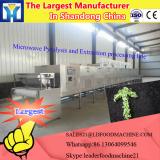
- Microwave tyre Pyrolysis and Extraction processing line
- 1 pcs
- Negotiable
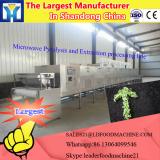
- Microwave tire Pyrolysis and Extraction processing line
- 1 pcs
- Negotiable

- Microwave sludge Pyrolysis and Extraction processing line
- 1 pcs
- Negotiable

- Microwave medicinal powder Pyrolysis and Extraction processing line
- 1 pcs
- Negotiable
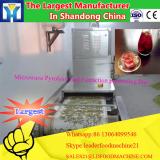
- Microwave rose essence Pyrolysis and Extraction processing line
- 1 pcs
- Negotiable
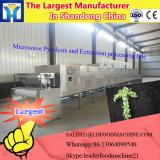
- Microwave sludge Pyrolysis and Extraction processing line
- 1 pcs
- Negotiable
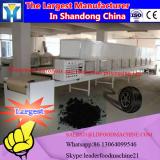
- Microwave tyre Pyrolysis and Extraction processing line
- 1 pcs
- Negotiable
